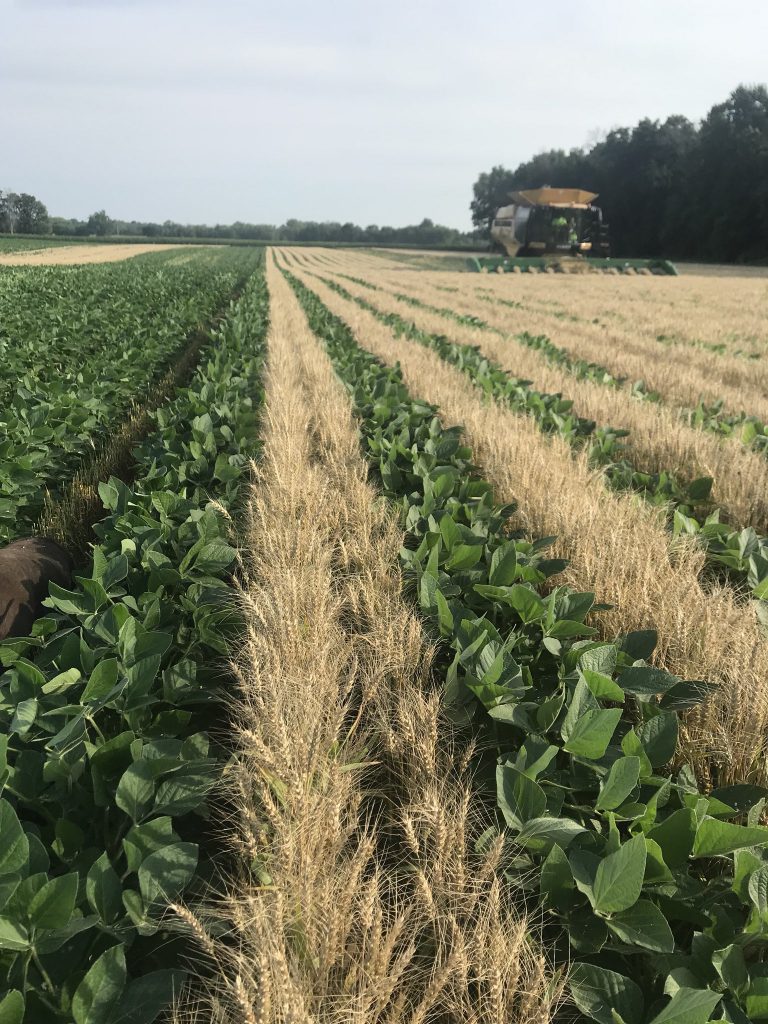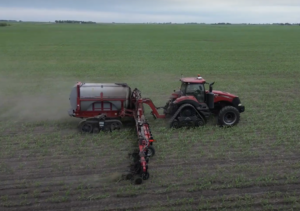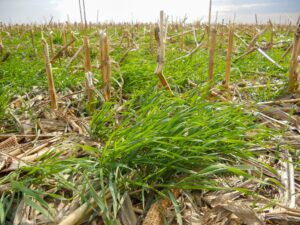By: 4R Plus
March 2021

When Ross Evelsizer, the natural resources project director for Northeast Iowa Resource Conservation and Development, scheduled a meeting to gauge interest in multi-cropping, farmers from Iowa, Missouri, Wisconsin, Nebraska, Minnesota and Illinois showed up ready to engage. With interest confirmed, the Multi-Cropping Iowa initiative was born.
Multi-cropping is more than one crop harvested on the same field in the same year. Field trials in 2019 started with nine Iowa farmers. “Some had been multi-cropping for a couple years, and some were rookies,” he explained. “We asked them for their data, and in return, provided soil sampling at no charge.”
Measuring soil health improvement

Evelsizer’s team, which includes a partnership with the Iowa Soybean Association, Iowa Department of Agriculture and Land Stewardship and the Natural Resources Conservation Service, compared the soil health from fields with several years of multi-cropping, fields in the first year of a multi-cropping system and fields with a conventional cover crop/no-till system. They also pulled soil samples from prairie and forest soils. “Then we compared the soil tests, which measured organic matter and biodiversity.
“It was interesting to see the differences. The cover crop/no-till field numbers were well below fields that had been multi-cropped for one year,” he continued. “And the multi-cropped fields were starting to approach numbers like the prairie and forest soils that haven’t been touched in 30 years.”
Evelsizer also tracked economic data from the first year of field trials. “We looked at every potential cost, for the basic crop inputs, labor and land costs, what they yielded and the actual value of the crop. The multi-cropping setup with 60-inch corn with a forage crop in between the rows didn’t pencil out as well as the soybeans/small grains multi-cropping system.
“In the soybean/small grains system, the average was a net profit three to five times higher per acre versus mono-crop beans – even for the farmers trying it for the first time. And that was in a bad weather year,” he said.
Multi-cropping benefits multiply
Besides weed suppression, reduced soil erosion, increased biodiversity and improved soil health, multi-cropping also positively impacts soil moisture.“During a field day last summer on one of the pilot farms, we compared infiltration tests on different fields.
“On a conventional field, the second inch of rain was taking a couple minutes to infiltrate. But on the multi-cropping field, a 4-inch rainfall took 2.5 minutes to infiltrate. It was almost double the infiltration rate,” Evelsizer explained.
Watershed improvements benefit everyone
Improved infiltration grabbed Evelsizer’s attention because he’s also a member of the Turkey River Watershed Management Authority working to reduce flooding and improve water quality. The watershed encompasses about 1 million acres.
“If we could implement voluntary multi-cropping on a larger scale, and Iowa soils could incorporate 4 inches of rainfall in two minutes, just think about the impact that could have on reducing flooding and soil erosion and controlling sediment,” he said.
Evelsizer is encouraged by the growing interest in adopting 4R Plus practices. “I’m seeing more farmers decide to adopt regenerative soil techniques,” he said. “It’s that decision not to fall plow, that decision to leave that little corner of grass or trees at the edge of the field.
“There’s so much interest in soil health now in the ag world, in reducing input costs while protecting the sustainability of the farm, and that’s exactly what multi-cropping does,” he added.
In 2021, Evelsizer’s field trials are expanding to include measuring flood impacts on multi-cropping fields. Follow Multi-Cropping Iowa on Twitter to learn more.



